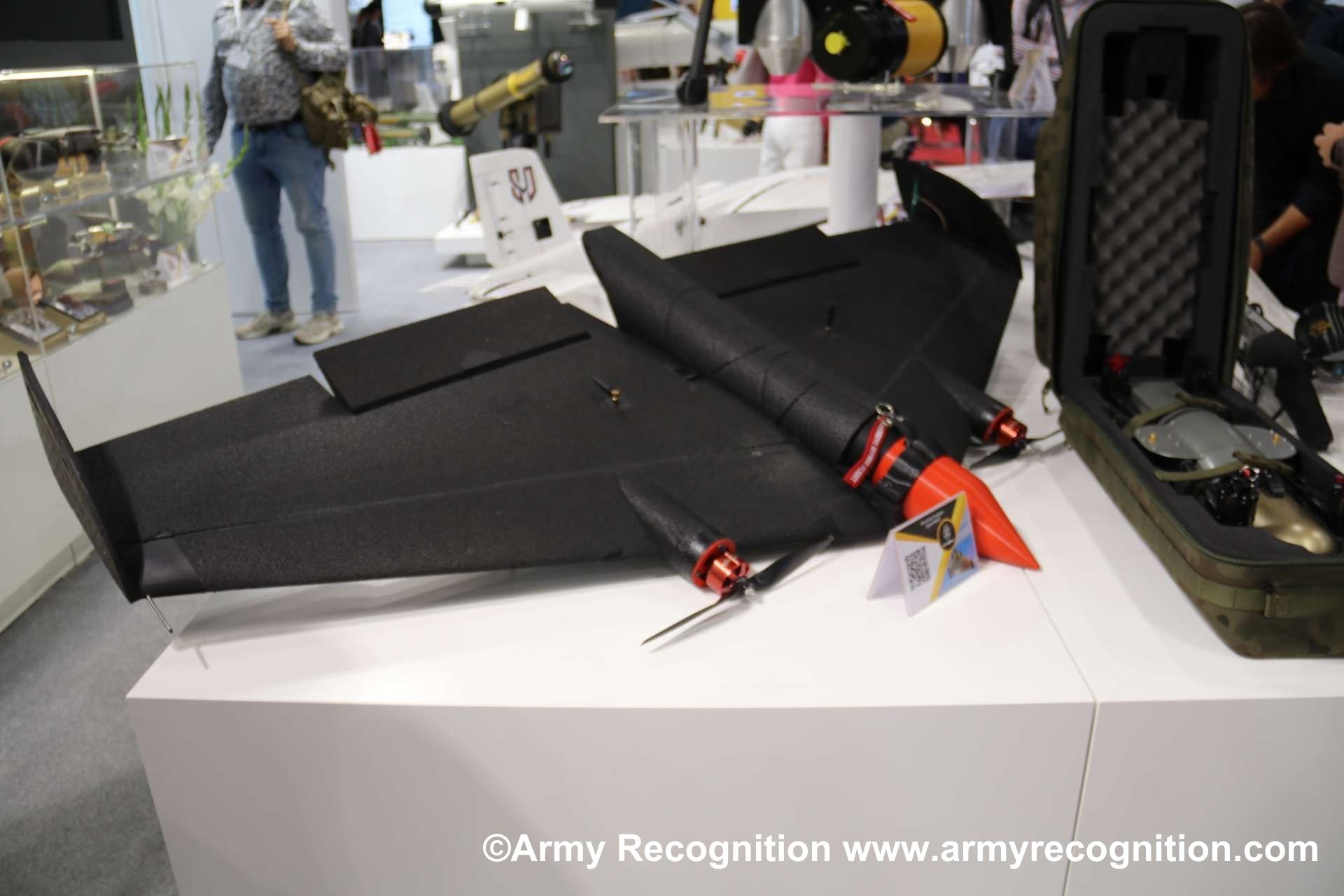CyberHEAT: Advanced Loitering Munition System based on Ukraine war feedback

{loadposition bannertop}
{loadposition sidebarpub}
The CyberHEAT is an advanced loitering munition system developed by the Military Armament Technology Institute. It is designed to deliver precise strike capabilities while adapting to various operational conditions. This device is specifically engineered to carry the GX-4 family warheads and stands out for its operational flexibility.Follow Army Recognition on Google News at this link
CyberHEAT ammunition presented by WITU at MSPO 2024. (Picture source: Army Recognition)
The CyberHEAT is distinguished by its ability to take off vertically from any surface, thanks to its “winged” design. This feature allows it to operate from constrained spaces, thereby increasing its versatility in operational settings. Additionally, the system can also be dropped from a carrier platform, providing an extra dimension to its deployment options.
The system is designed for single-person operation, facilitating its integration into military operations. It offers a flight time of 45 minutes and an operational range of 20 kilometers, with a maximum unidirectional range of 40 kilometers. Its maximum speed reaches 150 km/h, while its optimal speed is 70 km/h. The CyberHEAT can attain a maximum altitude of 3000 meters (9842 feet).
The CyberHEAT is designed to function under electromagnetic interference due to its ability to dynamically adjust the power and frequency of its radio link. It can also operate without GNSS support, enhancing its resilience in disrupted environments.
In terms of communication, the system uses encrypted telemetry on 868/900/915 MHz frequency bands. For video transmission, it is equipped with either 5.8 GHz digital or 1.3 GHz analog technologies, offering flexibility depending on operational needs.
The CyberHEAT is equipped with a digital 1080P camera with a wide-angle lens or an analog camera with a resolution ranging from 720P to 1080P, providing high-quality imaging for surveillance and reconnaissance missions. The system’s armament consists of GX-4 warheads, tailored to the specific requirements of strike missions.
At the WITU stand, CyberHEAT loitering munitions capable of carrying lighter Belma GX-4 warheads (weighing 1.6 kg) were also showcased. The advantages of this solution include the capability to launch from any surface without the need for a special launcher. CyberHEAT can also be dropped by the CyberHUB multirotor aircraft described above. The system is designed to operate in the presence of significant electromagnetic interference and without satellite navigation assistance. The operational range of CyberHEAT extends from 20 km (with the possibility of returning to the starting point) up to 40 km. Experience from the war in Ukraine shows that once fired, munitions will not return, primarily for the safety of the operator.

{loadposition bannertop}
{loadposition sidebarpub}
The CyberHEAT is an advanced loitering munition system developed by the Military Armament Technology Institute. It is designed to deliver precise strike capabilities while adapting to various operational conditions. This device is specifically engineered to carry the GX-4 family warheads and stands out for its operational flexibility.
Follow Army Recognition on Google News at this link
CyberHEAT ammunition presented by WITU at MSPO 2024. (Picture source: Army Recognition)
The CyberHEAT is distinguished by its ability to take off vertically from any surface, thanks to its “winged” design. This feature allows it to operate from constrained spaces, thereby increasing its versatility in operational settings. Additionally, the system can also be dropped from a carrier platform, providing an extra dimension to its deployment options.
The system is designed for single-person operation, facilitating its integration into military operations. It offers a flight time of 45 minutes and an operational range of 20 kilometers, with a maximum unidirectional range of 40 kilometers. Its maximum speed reaches 150 km/h, while its optimal speed is 70 km/h. The CyberHEAT can attain a maximum altitude of 3000 meters (9842 feet).
The CyberHEAT is designed to function under electromagnetic interference due to its ability to dynamically adjust the power and frequency of its radio link. It can also operate without GNSS support, enhancing its resilience in disrupted environments.
In terms of communication, the system uses encrypted telemetry on 868/900/915 MHz frequency bands. For video transmission, it is equipped with either 5.8 GHz digital or 1.3 GHz analog technologies, offering flexibility depending on operational needs.
The CyberHEAT is equipped with a digital 1080P camera with a wide-angle lens or an analog camera with a resolution ranging from 720P to 1080P, providing high-quality imaging for surveillance and reconnaissance missions. The system’s armament consists of GX-4 warheads, tailored to the specific requirements of strike missions.
At the WITU stand, CyberHEAT loitering munitions capable of carrying lighter Belma GX-4 warheads (weighing 1.6 kg) were also showcased. The advantages of this solution include the capability to launch from any surface without the need for a special launcher. CyberHEAT can also be dropped by the CyberHUB multirotor aircraft described above. The system is designed to operate in the presence of significant electromagnetic interference and without satellite navigation assistance. The operational range of CyberHEAT extends from 20 km (with the possibility of returning to the starting point) up to 40 km. Experience from the war in Ukraine shows that once fired, munitions will not return, primarily for the safety of the operator.





